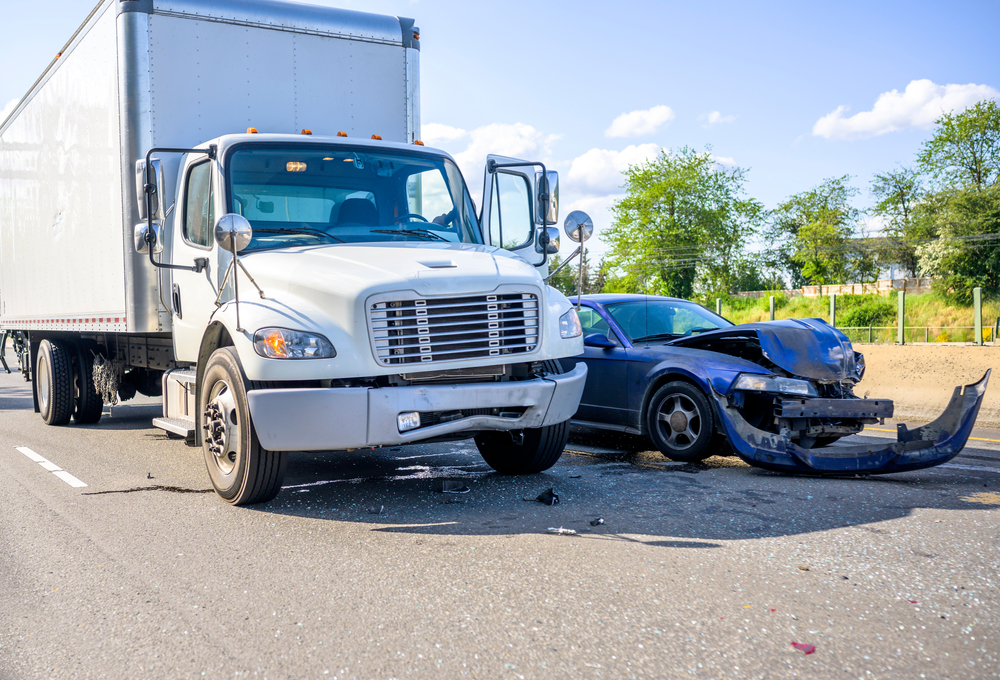The great risks posed by large and heavy commercial trucks driving on the same streets and highways as passenger vehicles are well understood. Catastrophic injuries that result from truck accidents bear evidence to the terrible forces at play when a big rig slams into a smaller vehicle. Because big rig wrecks often result in more severe injuries, such as traumatic brain injuries, spinal cord injuries, and burns, truck accident lawsuits can be very complicated. They can often involve not only development of liability theories, but also a complex assessment of the full extent of damages.
A crucial aspect of successfully obtaining full compensation for clients in truck accident cases is identifying all potentially liable parties. To do this, the lawyer must investigate not only the truck driver’s role in the accident, but also the extent to which the trucking company, the truck manufacturer, and others may have contributed to the accident.
In Diaz v. Carcamo, the California Supreme Court recently resolved a case involving allegations of a truck driver’s negligent actions as well as his employer’s negligence in hiring and retaining the driver. At issue was the question of whether or not evidence of the company’s negligent entrustment would be admissible if the trucking company admitted vicarious liability for the trucker’s negligence.
Theories Of Vicarious & Direct Liability
The case involved a serious car/truck accident on Highway 101 in Ventura County. The plaintiff, Dawn Diaz, suffered severe and permanent injuries when her southbound SUV was struck by a northbound vehicle that flew over the divider into her lane after it collided with Jose Carcamo’s northbound commercial truck. Diaz subsequently sued the driver of the third vehicle, Carcamo (for negligent driving) and his employer, Sugar Transport (for Carcamo’s negligent driving as well as negligent hiring).
In response to Diaz’s personal injury claim, Carcamo and Sugar Transport both denied that they had been negligent and argued that the third driver was solely at fault. Carcamo was driving in the center of three lanes and the record showed that the other driver hit his truck after passing on the left and merging back into the center lane in front of him without signaling. Diaz alleged that Carcamo had sped up to keep the other driver from passing, and provided expert testimony suggesting that he should not have been traveling in the center lane.
After trial had begun, Sugar Transport conceded its liability for any negligence ultimately attributed by the court to its employee. The employer argued that this admission must bar Diaz’s negligent hiring claim because of a 1954 California Supreme Court case, Armenta v. Churchill, that removes from a case all issues of negligent entrustment if an employer has admitted liability for an employee’s actions. The trial court disagreed, and the jury awarded Diaz over $22 million in damages, apportioned among the three defendants based on California’s comparative fault law.
The California Court of Appeal, Second District, upheld the trial court’s allowance of the negligent hiring and retention claim and the additional evidence that supported it. However, despite this, the California Supreme Court reversed, holding that Sugar Transport’s failure to invoke the Armenta rule before trial or move for separate trials did not cause it to forfeit its legal right to later assert that legal principle.
The court stated that an employer’s admission of vicarious liability makes negligent entrustment claims “irrelevant” and “superfluous,” and the trial court’s allowance of evidence of Carcamo’s prior employment, driving record, dishonesty, and accident history had prejudiced the jury to the detriment of Sugar Transport. The court reversed the judgment of the Court of Appeal and remanded the case for retrial.
Cases such as Diaz reveal the complicated legal concepts that can be involved in lawsuits involving catastrophic injuries. In this case, Sugar Transport will still be fully liable for its driver’s share of the responsibility for the accident, but the Supreme Court’s holding means that evidence that could inflame the jury, and impact the amount of damages it awards, will no longer be admissible at trial.
An injury lawyer’s job is to provide aggressive advocacy for their client, which means winning on liability and obtaining maximum compensation. To accomplish this, the attorney must not only be able to identify and prove every conceivable reason why the trucking company or other defendants are liable, but also evaluate and prove the full spectrum of damages sustained by the injured victim due to the defendants’ negligence.

